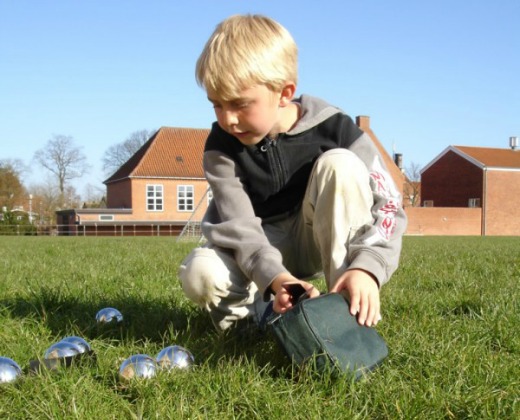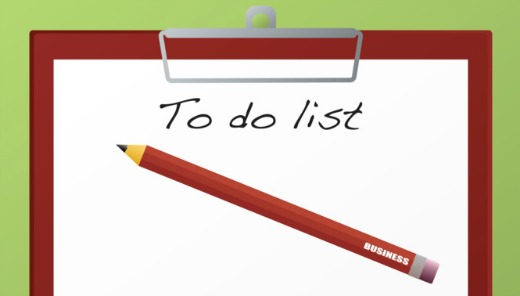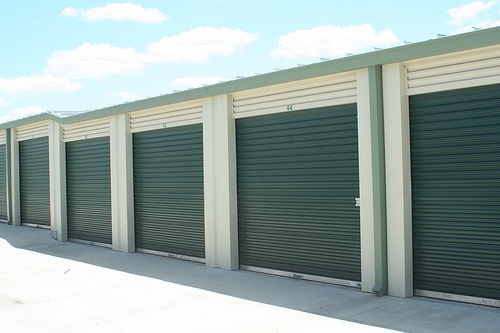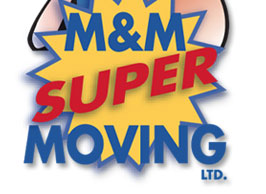Host a Yard Sale To Make Your Move Easier
Comments Off on Host a Yard Sale To Make Your Move Easier

When was the last time you wore that old t-shirt hanging in your closet,or used the sofa that’s tucked away in your storage shed? Rather than moving rarely used items such as this into your new home, you should sell them at a yard sale.
Benefits of Hosting a Yard Sale Before Moving
Hosting a yard sale is a great way to get rid of clothes, furniture, electronics, artwork, decorative accessories, and other items that you no longer need or use – while putting some extra spending cash in your pockets. Depending on the amount of foot traffic your yard sale receives, and the products you are selling, you might come away with several hundred bucks.
By selling your unused items, you’ll have less stuff to move into your new home. Moving isn’t an easy task by any means. You must physically pick up and transport each and every item in your home, which can quickly tire out even the most physically fit individuals. People who are reluctant to let go of old, unused items will have a harder time moving due to the time and labor required to move all of their belongings.
What To Sell, What To Keep
The first step in hosting a yard sale is to decide exactly what you want to sell and what you want to keep. Letting go of items that you’ve owned for several years is easier said than done, but a good rule of thumb is to mark things that you no longer need, nor use, for sale. Go through your closet, attic, basement, garage, storage sheds, etc., and pull out any items that you wish to sell.
Host Your Yard Sale on The Weekend
Timing is critical to hosting a successful yard sale. Hosting it in the middle of the week will result in low traffic and ultimately low sales. So, when is the best time to host a yard sale? Generally, the weekends bring in the most amount of customers, so aim to host it on either Friday-Saturday or Saturday-Sunday.
Signage
Place several signs around nearby busy streets and intersections announcing your yard sale. The more people who know about it, the more stuff you’ll sell. Be sure to include the street address, and set up multiple signs to guide customers to your house.
Pricing Your Items
Another tip that’s helpful to remember when hosting a yard sale is to price your items just slightly over what you’re willing to sell them for. Seasoned thrift shoppers will often attempt to negotiate lower prices on items; therefore, pricing them high will result in a fair deal for both you and the buyer.
Donate The Rest
Once your yard sale is over, call up one of the charity organizations in your area to see if they are willing to pick up the remaining unsold items. At the very least they will take the items off your hands.
Our team of moving professionals are here to help. We specialize in making your move as easy and stress-free as possible and we would love to help with your next move. Get a free online moving quote today.
Read more Home moving tips here.
Published in categories: For Sale, Home Moving Tips, Preparing To Move
Tips For Moving In Rainy Weather
Comments Off on Tips For Moving In Rainy Weather

You can spend months meticulously planning out each stage of your move, but there are some elements that are simply beyond your control, such as the weather. Regardless of how much time and energy you invest into planning your move, you can’t predict how mother nature will act when the big day rolls around.
The good news is that you can still move in rainy weather. It may not be as easy, or as comfortable, but following some basic precautions will ensure your belongings safely make it to your new residence.
Watch The Weather
Keep a close eye on the local weather forecast in the days leading up to your move. If you’re moving to a new city or state, check the weather for both your old and new residence. This will give you a better idea of what to expect when you’re moving furniture, boxes and belongings back and forth.
Just because the local meteorologist offers an optimistic weather prediction for your moving day doesn’t necessarily mean the skies will be blue. As the adage goes – hope for the best but prepare for the worst – holds true when planning a move.
Avoid Using Plastic Drop Sheets
Plastic drop sheets are often placed on hardwood and laminate floors to protect them from mud, dirt and debris during a move. While they offer an excellent barrier of protection against these elements, they may also create a serious hazard when it’s raining. Water will get tracked into the home, turning these plastic sheets into a dangerously slippery area.
Instead of covering your floors with plastic drop sheets, try using old quilts, comforters, or moving blankets.
Consider Purchasing Moving Insurance
Moving insurance will give you the peace of mind knowing that you are financially protected in the event that any of your furniture or belongings are damaged. Being that rainy weather increases the risk of such damage occurring, this is something you may want to consider, especially if the forecast calls for rain.
Use Plastic Containers
Cardboard and rain are two things that do not go together. Cardboard boxes become brittle and frail when exposed to rain, which could result in the bottom giving out. Try placing your items in large plastic containers rather than cardboard boxes. Granted, you may not be able to place all of your items in plastic containers, but storing the ones susceptible to water damage will protect them from the rain.
Our team of moving professionals are here to help. We specialize in making your move as stress-free as possible and we would love to help with your next move. Get a free online moving quote today.
Read more Home moving tips here.
Published in categories: Home Moving Tips
Apple’s New Austin Campus Will Create Thousands of New Jobs
Comments Off on Apple’s New Austin Campus Will Create Thousands of New Jobs

Austin, Texas will soon be the home of a new 1-million-square-foot Apple, Inc. The campus is expected to bring an estimated 3,000-4,000 jobs to Austin, which coincidentally is already ranked as one of the country’s fastest growing cities.
The company first announced the new Austin campus back in 2012. This isn’t going to be a replacement for its shapechip-themed Cupertino headquarters, but rather a new branch where Apple can develop new products, build current products, offer support, and perform all of the other tasks commonly associated with running a fortune 500 tech company.
“Our operations in Austin have grown dramatically over the past decade, from less than 1,000 employees in 2004 to more than 3,500 today. We’re looking forward to building a new campus in Austin, which will more than double the size of our workforce there over the next decade,” said Apple in a statement regarding their new Austin campus.
According to reports from 9to5Mac, Apple CEO Tim Cook and SVP of Internet Software and Services Eddy Cue visited the campus site last Thursday to check on the project’s construction. Several sources close to the project claim the new Austin campus is now fully operational, which would make sense given all of the Apple job postings popping up on various Austin websites.
“To put it in perspective, prior to the Apple announcement, the largest single job creation from one project was 1,000,” says Brian Gildea, Austin’s economic development manager.
In exchange for bringing thousands of new jobs to Austin, Apple, Inc. was given more than $30 million in tax incentives.
It’s important to note that while Apple’s new Austin campus is technically operational, the company has bigger plans in place for it. They plan to continue building and adding new branches to the campus, with a projected “end date” of 2021. When the campus is fully complete, it will comprise over 1 million square feet and employ around 3,600 employees.
Apple has also expressed interest in expanding its European headquarters in Ireland. If the company proceeds with construction overseas, it would bring approximately 500 new jobs to the region.
Apple has been in the news a fair amount lately, with the company confirming a $3 billion acquisition of Beats Music & Electronics by the famous hip-hop star Dr. Dre. There was initially some doubt on whether or not the deal would go through, but Apple confirmed the acquisition last month. Of course, it only makes sense for Apple to pick up Beats, as it offers a popular streaming music service – something that Apple has yet to succeed in.
Published in categories: Austin Texas, Community News
5 Ways To Make Packing and Moving Fun For Kids
Comments Off on 5 Ways To Make Packing and Moving Fun For Kids

Moving isn’t at the top of most kids’ “fun things to do” list. It’s a time-consuming, stressful, and physically-enduring activity that offers minimal enjoyment. Kids would probably prefer to spend their day playing at the park or lounging in front of the television. If you’re planning on moving sometime in the near future you can make the process more enjoyable for your child by following these tips this link.
#1) Make It a Family Activity
Far too many parents shove their children to the side on the moving day, just to keep them out of their way. A better approach is to turn your moving day into a family activity, allowing your child to pitch in and help you load and unload boxes. Even if your child is too small to carry the large boxes, you can still make some smaller, lighter boxes specifically for him or her. Allowing your child to help out gives them a sense of usefulness and pride.
#2) Pet Sitter
Do you have a dog, cat or any other family pet? If so, perhaps you can designate your child with the task of watching over the family pets. It’s important for pets to stay out of the way while the boxes and furniture are being loaded onto the moving truck. Children will enjoy the responsibility of watching over the family pets during the move, as it gives them something to do and keeps them company.
#3) Build a Box Fort
Rather than throwing your used cardboard boxes in the trash, try building a fort for your child to play in. Half a dozen or so medium-sized boxes can make some pretty impressive forts. And once your child sees first-hand just how easy it is, they’ll probably want to build their own fort.
#4) Let Your Child Decorate
When you’re finished moving all of your belongings into your new home, ask your child for feedback on how they want their bedroom decorated. Including your child in the decorating of your new home allows for a smoother transition, and it will also keep them occupied when you’re unpacking boxes.
#5) Reward Your Child
Boys and girls of all ages will jump at the opportunity to earn some cash for helping out. Paying them to carry boxes, clean, unpack, move items to the right room, etc. will keep your child busy while promoting a smooth moving experience for everyone involved.
Whether you are moving with kids or not, our team of moving professionals are here to help. We specialize in making your move as stress-free as possible and we would love to help with your next move. Get a free online moving quote today.
Read more posts on moving with children here.
Published in categories: Moving With Children
Last-Minute Things To Do The Night Before You Move
Comments Off on Last-Minute Things To Do The Night Before You Move

Moving is a laborious and equally stressful task, but you can make things easier for yourself, and any professional movers you hire, by planning ahead. This includes the obvious steps of planning – packing, labeling boxes and breaking down furniture – as well as the not-so-obvious “last-minute” steps. In this post, we’re going to reveal some of the last-minute things individuals and families should do the night before they move.
Disconnect Major Appliances
Go ahead and disconnect all of the major appliances in your home, including the dishwasher, washing machine, clothes dryer, oven/range and refrigerator. Pull the appliances away from the wall, unplug them, and tape the cords on top of the unit so they won’t get in your way during the move.
When you’re disconnecting the washing machine, make sure you turn the water completely off (usually a pair of blue and red faucet knobs). Leaving the washing machine water line in the open position, even if the water to your home is turned off, could result in flooding when the new owner or tenant arrives. He or she will active water to the home, at which point the open washing machine lines will flood the laundry room.
Clean Out The Fridge
The night before you move is also the perfect time to clean out your fridge (before you disconnect it, of course). Fill up a cooler with ice and place all foods and beverages that require refrigeration inside. You’ll want to move these into the fridge at your new home as soon as possible, but this should suffice for the time being.
Note: with the exception of mayonnaise, most condiments do not require refrigeration. If you have a couple shelves filled with condiments, place them inside a box to save space in the cooler.
Pack Up The Bathroom
Since this is the last night you’ll spend at your old home, you can now pack up the bathroom. It’s easy to overlook the bathroom when you’re busy packing up the rest of your home, but unless you want to fiddle with your toiletries and other small belongings on the day of your move, you should take care of this now.
Garage and Storage Shed
Don’t forget to check the garage and storage shed on the night before you move. Make sure all of the items stored here are properly packed and ready to hit the truck. If there are any small, loose items left inside your garage or storage shed, toss them into a box and slap a piece of tape across the top.
Our team of moving professionals are here to help. We specialize in making your move as stress-free as possible and we would love to help with your next move. Get a free online moving quote today.
Find more moving checklists here.
Published in categories: Home Moving Tips, Moving Checklist
How To Relieve Post-Moving Muscle Aches and Pains
Comments Off on How To Relieve Post-Moving Muscle Aches and Pains

Physically packing and moving every item in your home can take its toll on your body. You may wake up the following day – in the comfort of your new home, of course – only to notice a general aching sensation coursing through your body. This is the direct result of physically exerting yourself during the move, which in turn creates tiny microscopic tears in your muscle fiber that cause muscle aches, pains and soreness.
Even if you feel fine on the day of your move, you may still develop sore, aching muscles in the days to follow. This phenomenon is referred to as delayed onset muscle soreness (DOMS), and it’s common in all types of physically intense activities, including moving. If you discover muscle pain after moving, follow the advice below to set your body on the path to recovery.
Avoid Heavy Lifting For at Least 48 Hours
A good rule of thumb is to wait a minimum of 48 hours before doing any heavy lifting or physically intense activity. This allows your body ample time to repair the torn muscle fibers. If you happen to hit the gym for a strength training regimen the day after you move, you could prolong your muscle soreness by further breaking down the fibers.
Take a Warm Bath
A warm bath can make a world of difference in alleviating muscle aches and pains. Don’t worry about unpacking all of those boxes just yet, but instead take a load off and enjoy a calm, relaxing warm bath. Just a short 30-minute session will improve any muscle discomfort you are feeling while speeding up the recovery process. You can even sprinkle a cup or two of Epsom salt in the water for an even more effective pain-relieving bath.
Stay Hydrated
Every living organism on Earth needs it, and your body is no exception. Make sure you drink plenty of water before, during and after moving. Staying hydrated will keep nutrients flowing to your muscles and vital organs; thereby protecting against muscle soreness.
So, how much water should you be drinking? There’s no simple answer to this question, as it depends on your age, metabolism, physical activity levels, body chemistry and more. Some health experts advise people to drink at least eight, 8-ounce glasses of water per day, which seems to be a good ballpark figure.
Should I See a Chiropractor?
If you’re still coping with muscle aches and pains 3 days or more after your move, you may want to schedule an appointment with a local chiropractor in your area. He or she will be able to examine your body for any underlying injuries that could be linked to your symptoms.
If you’d like to avoid the soreness altogether, hire a professional moving company to do the heavy lifting. Our team of moving professionals are here to help. We specialize in making your move as stress-free as possible and we would love to help with your next move. Get a free online moving quote today.
Read more Home moving tips here.
Published in categories: Home Moving Tips, Stress-Free Moving
Easy Ways To Save Money Moving
Comments Off on Easy Ways To Save Money Moving

The cost of moving into a new home can place a heavy financial burden on families. According to a 2010 report by Worldwide ERC, the average U.S. family spends an eye-opening $12,230 to relocate. Granted, this statistic focuses strictly on full-service moves performed by professionals, but the bottom line is that moving isn’t cheap. Thankfully, you can save money moving by following some of the money-saving tips listed below.
Don’t Buy Your Boxes
Post offices, shipping supply stores, and general home goods stores typically sell cardboard boxes for about $1-$3 bucks a piece depending on the size. If your move requires 50 boxes, which is on the low end of the spectrum, that’s $50-$150 in boxes alone.
Rather than buying your boxes, check with some of the local liquor and retail stores in your area. Most of these places will gladly hand you their boxes, as it takes the work of breaking them down and shipping them off to a recycling facility off their shoulders.
Also, here at M&M Super Moving, if we move you, we’ll rent you the boxes you need. Then, when you’re all finished unpacking just give us a call and we’ll come pick them up from you. You pay a small price for the boxes, which is refunded to you when we pick them up.
Watch The Bubble Wrap
Packing bubble wrap in your boxes is a great way to protect them against damage, but its expensive price tag limits is utility during a move. Wrapping every item in bubble wrap can quickly hike up your total moving expenses.
Does this mean you should avoid packing your items with bubble wrap? Not necessarily, but you should make smart decisions on which items to wrap in this costly material and which ones not to wrap. Pack fragile, easy-to-break items with bubble wrap and only use a very small amount for each item.
Ship Books Via U.S. Postal Service
The U.S. Postal Service offers special discounts when shipping books and sound recordings through a program known as Media Mail. If you have a large library of books, contact your local post office to learn more about this program. Opting to ship your books via Media Mail can save you time, energy and ultimately money.
Cut Off Your Utilities
When you are finished moving, call and cancel your utilities at your previous residence. This includes gas, electricity, telephone, internet, cable/satellite and security monitoring. Failing to cancel your utilities could result in further charges to your account, even if the utilities are not being used. On the plus side, some utility companies will refund your security deposit (assuming you paid one) when you cancel your service, which puts more money in your pocket to help offset the costs of moving.
Our team of moving professionals are here to help. We specialize in making your move as stress-free as possible and we would love to help with your next move. Get a free online moving quote today.
Read more Home moving tips here.
Published in categories: Home Moving Tips, Packing Tips
How To Maximize Space In a Self-Storage Unit
Comments Off on How To Maximize Space In a Self-Storage Unit

Renting a self-storage unit is a great way to store items that you rarely (or never) use so they don’t clutter your home. From old couches and appliances to clothes and collectibles, you can store pretty much anything your heart desires in a climate-controlled self-storage unit without fear of incurring damage.
But space is somewhat of a rare commodity in self-storage units, which is why it’s important to strategically place your items in the most efficient manner possible. Chaotically loading boxes and furniture into the unit with no clear plan of attack isn’t going to work, as the unit will quickly fill. You can maximize the available space a self-storage unit provides by following some simple steps.
Box Your Items
When possible, pack your items into boxes before moving them into the self-storage unit. Boxes not only offer extra protection against damage, but they are also easier to transport, maneuver and stack. You can stack boxes vertically until you reach the unit’s ceiling, allowing for more efficient usage of the available space. Granted, some awkwardly shaped items may not fit, but most common items can be easily packed into a box.
Store Large Items Against The Wall
Store all of your furniture, appliances and large items against the wall of your self-storage unit. Some people place their large items right inside the unit simply because they don’t feel like struggling with them, but this restricts access to others parts of the unit while limiting your available space.
The bottom line is that you should always place your large items against the wall. If smaller items are currently being stored here, move them out to make room for larger items. This is arguably one of the most important steps in maximizing the available storage space.
Keep a Walking Path Clear
An all-too-common mistake that people make when loading self-storage units is failing to set up a clear walking path. If you pull open the door to your unit and discover a wall of items obstructing your view, you won’t be able to effectively move items into the unit, or move them out the unit. Maintain a clear walking path in your self-storage unit at all times, even if it means sacrificing a lane of space that could otherwise be used for storage.
An effective walking path should extend all the way to the back of the unit. You can also create two more walking paths – one on each side – to access the items stored on the side. Larger self-storage units in particular will benefit from the use of a cross-shaped walking path.
Our team of moving professionals are here to help. We specialize in making your move as stress-free as possible and we would love to help with your next move. Get a free online moving quote today.
Published in categories: Storage
What Should I Do With My House Plants When I Move?
Comments Off on What Should I Do With My House Plants When I Move?

Houseplants are a wonderful addition to any home. They filter dust, bacteria and mold from the air while simultaneously releasing fresh oxygen. Of course, they also bring a natural source of style and color to the décor, offering a cohesive, uniform appearance that completes the interior design. But what should you do with your houseplants when you are preparing to relocate to a new home?
Don’t Throw Them Away!
Tossing your houseplants in the trash may save you time and energy, but it also prevents you from further enjoying them in your new home. Don’t assume that throwing away your houseplants is the only viable solution, as you can move them relatively easily.
If for whatever reason you decide that you don’t want your houseplants in your new home, call some friends and family members to see if they are willing to take them. Most people will gladly jump at the opportunity to own some free houseplants, and giving them away takes them off your hands so you can focus on moving the rest of your belongings.
Boxing Houseplants
Houseplants come in all different shapes and sizes, adding another level of difficulty when moving them. Generally, though, the easiest and most effective way to move houseplants is by placing them inside sturdy boxes while leaving the top open. You can then lay them inside your vehicle (transport houseplants in your personal vehicle, not a moving truck) and transport them to your new home.
Before you start packing your houseplants, make sure the bottom of your boxes are fully secure. The weight of the plant, its moisture content, the soil, and the container may cause the box to collapse. Securing the bottom with several strips of heavy-duty duct tape will help prevent this from happening.
Carrying Houseplants
Even if you followed the advice mentioned above and secured the bottom of the boxes with duct tape, the weight and awkward shape of a houseplant may cause the bottom of the box to break; thus, sending your plants crashing to the floor. To prevent this, carrying your boxed houseplants by supporting the bottom. Don’t just bear-hug the sides, but instead wrap your arms underneath the box to provide additional support.
After moving your houseplants into your new home, temporarily position them by a window where they’ll receive sunlight. You can worry about finding a permanent home for your plants once you’re finished moving.
Our team of moving professionals are here to help. We specialize in making your move as stress-free as possible and we would love to help with your next move. <a title="Free Online Moving Quotes" href="http://mmmoving you can check here.com/moving-quotes/”>Get a free online moving quote today.
Read more Home moving tips here.
Published in categories: Home Moving Tips
5 Fun Facts About Moving
Comments Off on 5 Fun Facts About Moving

Are you planning a move in the upcoming months? Relocating to a new home is both exciting and stressful. You’ll have a blank palette in your new home to decorate and design the way YOU want, but you’ll also have to deal with all of the planning and preparation that goes into moving. Rather than spending all of your time stressing over the little things, take a step back, relax and unwind by reading these fun facts about moving.
#1) 46 Million Americans Move Annually
According to the Census Bureau, approximately 46 million people in the U.S. move each year. To put that number into perspective, that’s almost six times the number of annual visits to the Washington Memorial. The exact number varies from year to year, but it typically hovers around the 40-50 million mark.
#2) People Move an Average of 11.7 Times Throughout Their Life
Another eye-opening statistic provided by the U.S. Census Bureau is that the average person in the U.S. will move 11.7 times in his or her life. Whether it’s moving into a new home across the street or going across state lines to the opposite side of the country, people tend to move a fair amount in their life. Of course, some people relocate much more than 11.7 times.
#3) The Number One Reason For Moving Is Job Convenience
Nearly half (46%) of all moves are due to job convenience. When a person gets a new job, he or she may want to cut down on their daily commute by moving closer to the workplace. In addition to saving them time, it can also cut down on their gas usage.
In case you were wondering, the second most common reason for moving is retirement (32%), and the third is personal reasons (22%).
#4) Half of All Moves Occur Between May And September
The beginning of May to the end of September is the ‘hot spot’ for moving within the U.S. It’s estimated that nearly half of all moves in the U.S. take place during this time period. This is due in part to the fact that children are out of school and adults are able to take vacation time off from work.
#5) Moving Is The Third Most Stressful Event In a Person’s Life
We talk about this a little bit more in a previous blog post, How To Overcome The Stress of Moving, but the fact is that moving is rated as the third most stressful event in a person’s life, only behind the death of a loved one and divorce. There are some ways you can reduce moving-related stress, however, such as planning ahead, hiring the right moving company, setting up utilities in advance, etc.
Our team of moving professionals are here to help. We specialize in making your move as stress-free as possible and we would love to help with your next move. Get a free online moving quote today.
Read more stress-free moving tips here.
Published in categories: America Moves, Stress-Free Moving





